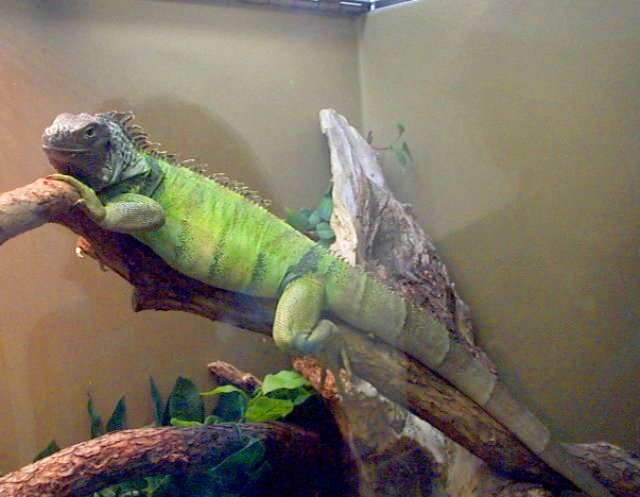

| Name: Green Iguana |
| Scientific name: Iguana iguana |
| Range: American tropics |
| Habitat: Trees above water |
| Status: Not endangered (yet) |
| Diet in the wild: plants |
| Diet in the zoo: flowers, fruit, and leaves |
| Location in the zoo: Education Center |
Physical description: The green iguana grows from 10 in at birth up to 7 ft. Two-thirds of its body length consists of its tail and is covered in scales. This lizard has a large head and a rounded snout; each of its limbs has five digits with long sharp claws attached to each. Under their chin and neck hangs a loose, comb-edged flap of skin called a dewlap. They are bright green in color, which dulls with age. |
Comments about the green iguanas of the Fort Worth Zoo: The iguanas at the zoo have a diet of fruit, plants, and flowers. They are housed in the reptile and amphibian section. Although their cage is big, it is small compared to these beasts. |
Personal Observations: These quiet creatures never really move too much. In fact they seem quite lazy. When they do move, their gestures are sluggish and minute. |
Links and Sources Green Iguana at the Sedgwick County Zoo Green Iguana at University of Michigan Animal Diversity Site Russell, Anthony P. "Osteologyof Reptiles." American Zoologist, 38(4) Sept. 1998. |
| Page author:
Email: Cat4201981@aol.com |
|
|